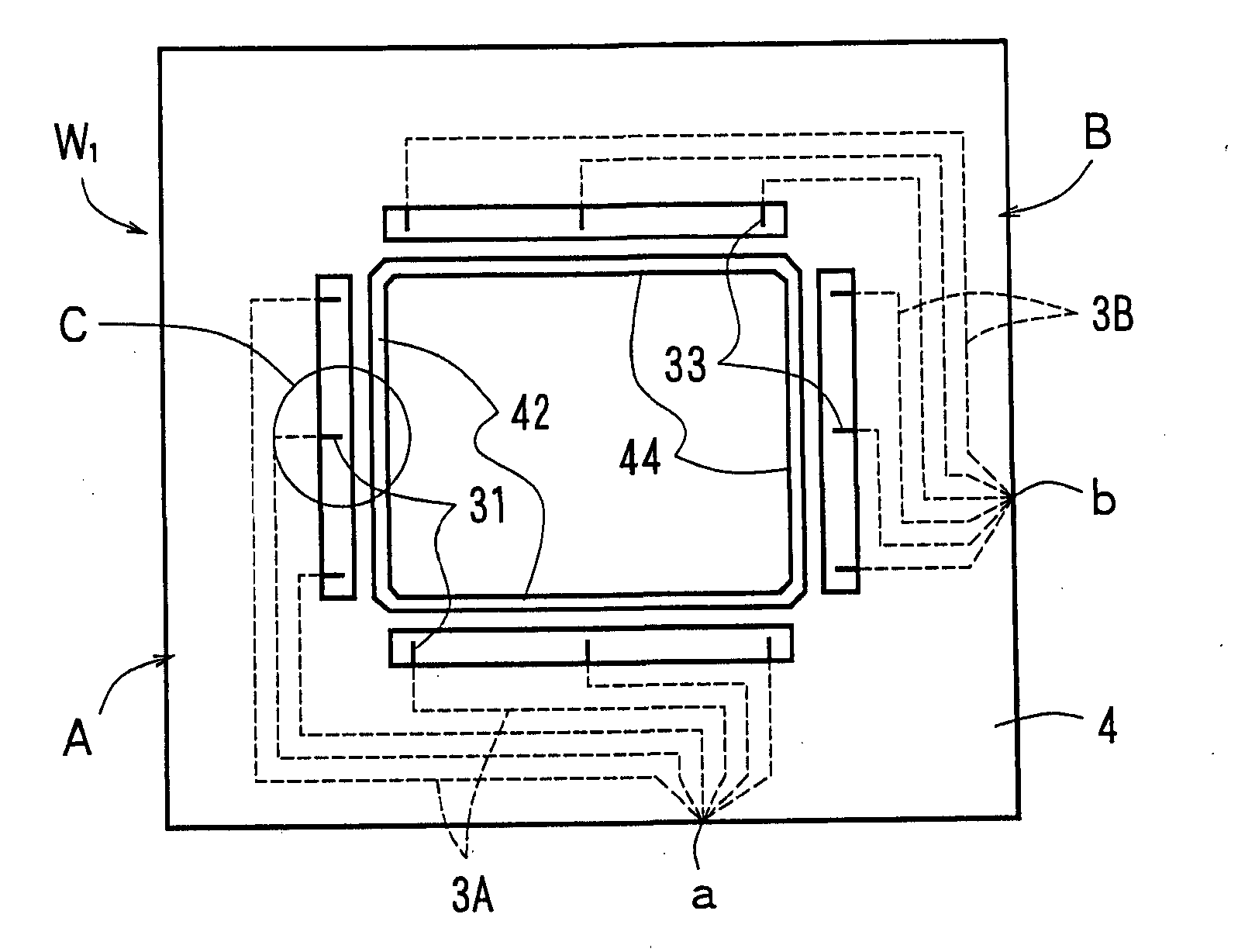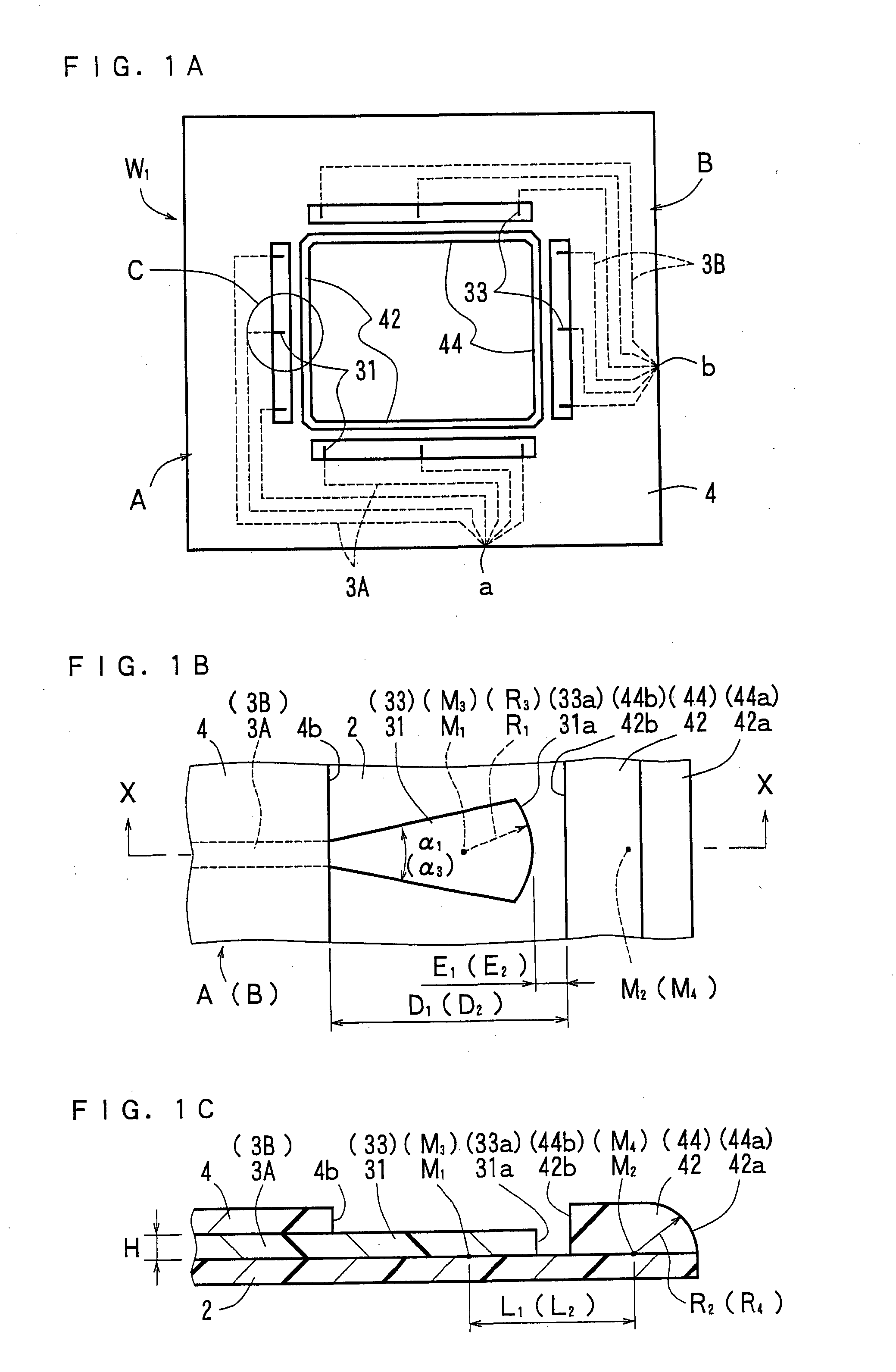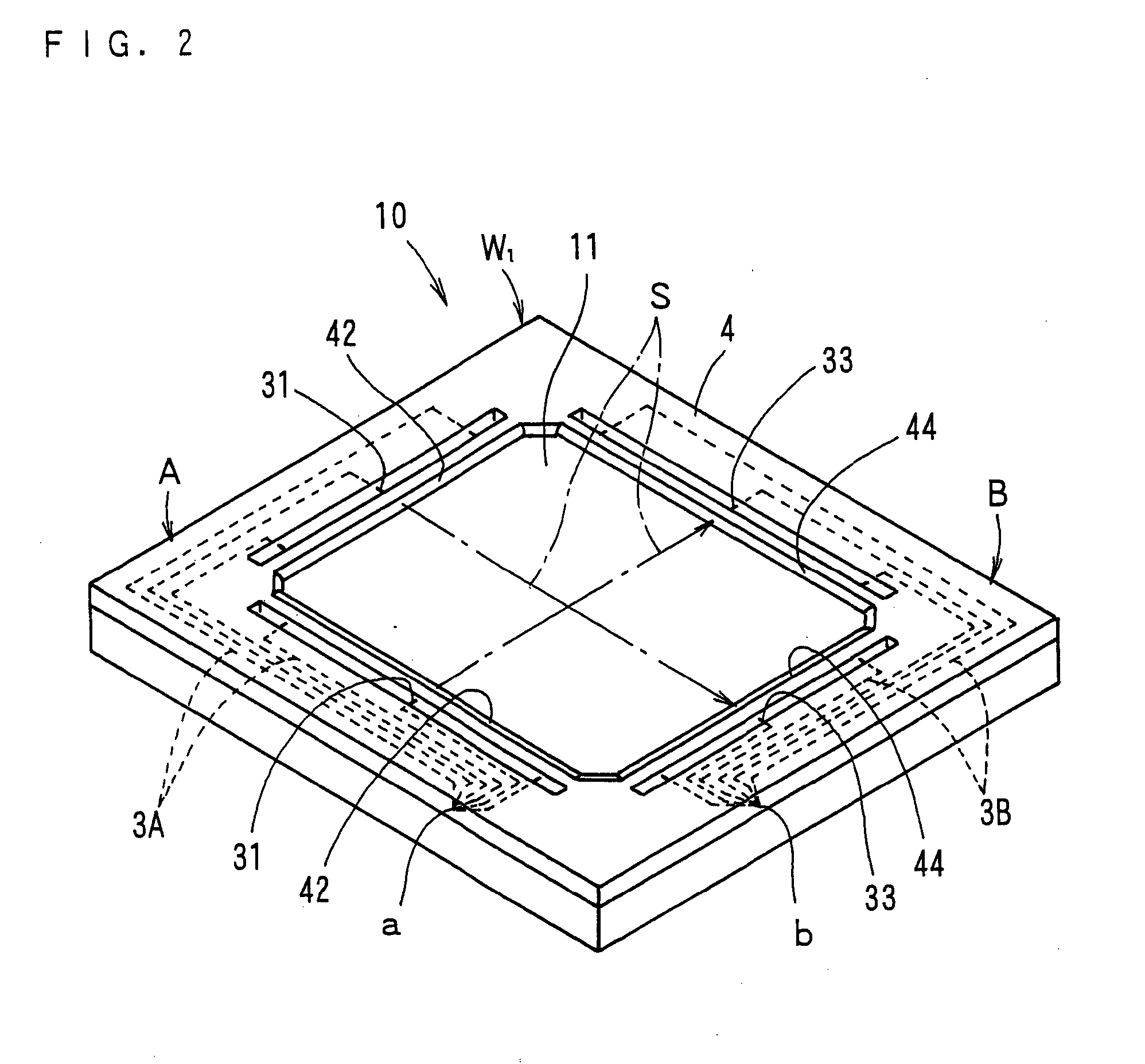Optical waveguide for touch panel and touch panel using the same
a technology of optical transmission and touch panel, which is applied in the direction of optical waveguide light guide, instruments, computing, etc., can solve the problems of low optical transmission efficiency, inability to accurately detect, and the position of the portion of the display screen touched with the finger cannot be accurately detected, so as to enhance optical transmission efficiency, improve productivity, and improve productivity
- Summary
- Abstract
- Description
- Claims
- Application Information
AI Technical Summary
Benefits of technology
Problems solved by technology
Method used
Image
Examples
examples
Material for Formation of Under Cladding Layer and Over Cladding Layer
[0062]A material for formation of an under cladding layer and an over cladding layer was prepared by mixing 100 parts by weight of an epoxy resin having an alicyclic skeleton (EP4080E manufactured by ADEKA Corporation) (component A), and 2 parts by weight of a photo-acid generator (CPI-200K manufactured by SAN-APRO Ltd.) (component B) together.
Material for Formation of Cores
[0063]A material for formation of cores was prepared by dissolving 40 parts by weight of an epoxy resin having a fluorene skeleton (OGSOL EG manufactured by Osaka Gas Chemicals Co., Ltd.) (component C), 30 parts by weight of a polyfunctional fluorene epoxy (EX-1040 manufactured by Nagase ChemteX Corporation) (component D), 30 parts by weight of 1,3,3-tris{4-[2-(3-oxetanyl)]butoxyphenyl}butane (component E), and one part by weight of the aforementioned component B in 40.8 parts by weight of ethyl lactate.
Production of Optical Waveguide for Touch...
PUM
 Login to View More
Login to View More Abstract
Description
Claims
Application Information
 Login to View More
Login to View More - R&D
- Intellectual Property
- Life Sciences
- Materials
- Tech Scout
- Unparalleled Data Quality
- Higher Quality Content
- 60% Fewer Hallucinations
Browse by: Latest US Patents, China's latest patents, Technical Efficacy Thesaurus, Application Domain, Technology Topic, Popular Technical Reports.
© 2025 PatSnap. All rights reserved.Legal|Privacy policy|Modern Slavery Act Transparency Statement|Sitemap|About US| Contact US: help@patsnap.com



